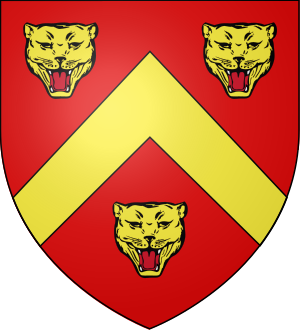George Parker, 4th Earl of Macclesfield facts for kids
Quick facts for kids
The Earl of Macclesfield
|
|
|---|---|

Arms of Parker, Earls of Macclesfield: Gules, a chevron between three leopard's faces or
|
|
| Captain of the Yeomen of the Guard | |
| In office 1804 – 15 November 1830 |
|
| Monarch | |
| Prime Minister | |
| Preceded by | The Lord Pelham |
| Succeeded by | The Marquess of Clanricarde |
| Personal details | |
| Born | 24 February 1755 |
| Died | 20 March 1842 (aged 87) |
| Nationality | British |
| Spouse |
Mary Frances Drake
(m. 1780; died 1823) |
George Parker, 4th Earl of Macclesfield (born February 24, 1755 – died March 20, 1842) was an important British politician. He was also known as Viscount Parker for many years. He served in the House of Commons, which is part of the British Parliament, from 1777 to 1795. Later, he became a "peer," which meant he had a special title and could sit in the House of Lords.
Early Life and Family
George Parker was born into a noble family. His father was Thomas Parker, 3rd Earl of Macclesfield. His mother was Mary, the daughter of Sir William Heathcote. George Parker married Mary Frances Drake in 1780. She passed away in 1823. George Parker himself lived to be 87 years old. After he died in 1842, his younger brother, Thomas, took over his title.
A Career in Government
George Parker began his political journey in 1777. He was elected to Parliament for a place called Woodstock. He held this seat until 1784. Later, he represented Minehead in Parliament from 1790 to 1795.
In 1791, he became a member of the Privy Council. This is a group of important advisors to the King or Queen. At the same time, he was made Comptroller of the Household. This job meant he managed the royal household's finances and staff. He kept this role until 1797.
When his father died in 1795, George Parker inherited the title of Earl of Macclesfield. This meant he moved from the House of Commons to the House of Lords. From 1804 to 1830, he held a special position called Captain of the Yeomen of the Guard. This role involved leading the ceremonial bodyguards of the monarch. He served under eight different prime ministers during this time.
Serving During Wartime
During the French Revolutionary War, George Parker helped organize local cavalry (horseback soldiers) in Oxfordshire. This group was known as the Watlington Cavalry. It was an early version of what later became the Oxfordshire Yeomanry. He was appointed as their Captain in 1798.
In 1818, he was also chosen to be a fellow of the Royal Society. This is a very old and respected group for scientists.
Helping London Grow
George Parker was also involved in big projects outside of government. From 1812, he was a director of the Regent's Canal. This was a major waterway project in London. He became the chairman of the canal company in 1816.
Building the canal was a very difficult task. There were many problems and challenges to overcome. But George Parker helped guide the project through these tough times. Thanks to his leadership, the canal was finally opened in 1820. This canal helped transport goods and people across London. In 1824, he also became a commissioner for the Crown Estate Paving Commission. This group helped manage public spaces in London.

